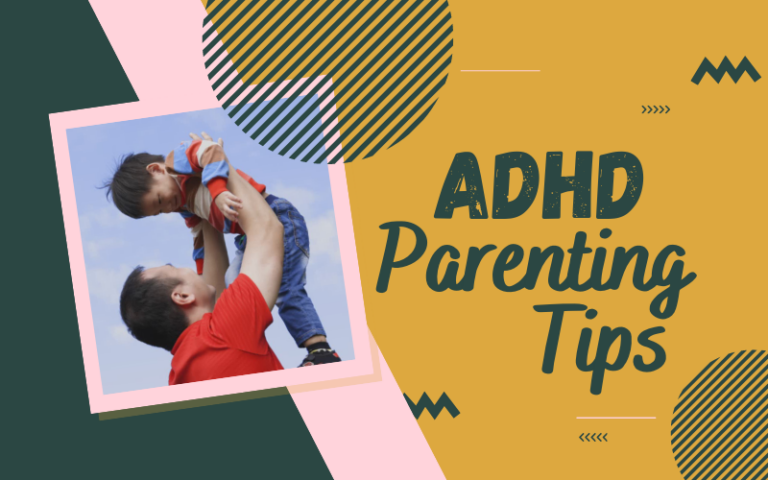We will not even try to explain how challenging it is to raise a child with ADHD. The moment your kid gets this diagnosis, you can forget about all the parenting strategies you carefully planned and organized. Yes, you will have to create an entirely new lifestyle and adapt to it as soon as possible.
We know how difficult this sounds, but the sooner you come up with a new strategy and learn about your child’s needs, the sooner you will adapt to the “new normal.” Here are some tips you should implement into your everyday life to make the whole process much more manageable.
1. Research ADHD

The very first thing you have to do the moment you leave the doctor’s office after getting this diagnosis is to start your own research of ADHD. You probably already know that this disorder makes it very difficult for your child to sit still, concentrate on tasks in front of them, pay attention, follow directions, and even control impulsive actions.
These symptoms can have a negative impact on their social and academic life.
Even though in the past people believed that children outgrew this behavior when they reached adulthood, today we know this is not true. In fact, this disorder can dictate their adult life, and if not treated properly, make it more challenging. These are only some essential facts you need to know about ADHD. Naturally, there are many more, and it is vital you learn about different treatment options. Considering that there are several of these, you need to seek a professional’s help, and you can contact one on mitchelkatzmd.com.
2. Give clear instructions

As already mentioned, kids with ADHD struggle with following instructions. This occurs because it is very challenging for them to focus on what you are telling them. Due to this reason, you have to make sure that your directions are clear and concise. What do we mean by this? Well, first of all, you should give them one instruction at a time. So, instead of listing a few of them, such as “clean your toys,” “brush your teeth,” and “put on your PJ,” you should give them a new instruction only after they complete the previous one.
Next, you have to make sure that those directions are clear. If you tell them to clean their room, they will probably go do it but get distracted by something else. To avoid this from happening, you should create a checklist and enable them to focus on one task at a time.
Finally, before presenting them with the task, you have to be sure that you have their full attention. Turn off the TV and remove all the distractions in the room. Have them look at you while you are speaking, and ask them to repeat the directions to be certain they understand them.
3. Decide on acceptable behavior

One of the initial decisions you have to make when designing a new parenting strategy is regarding the rules, acceptable behavior, and consequences. It is vital to make sure to follow these guidelines. There is no point in having rules if you are going to stick to them one day and then break them the next. This is not beneficial for your child’s development.
Once again, you have to make sure that each rule on your list is clear, meaning that your kid needs to understand it fully. They need to know what behavior is acceptable and what the consequences of not following the instructions are.
4. Positive reinforcement

Positive reinforcement will be your main asset while parenting. It is not only important that your kid understand unacceptable behavior and consequences, but you also need to reward and praise them for a job well done. The primary advantage of this is that it will help your kids understand the rules easily and motivate them to act according to the guidelines.
When it comes to the reward system, it can be anything you want. You can assign a specific number of points for each task they complete, and once they reach the goal, they get a reward. It can be an extra screen time, a new toy or video game, dessert or dinner at their favorite restaurant, and so on.
5. Stay calm during a tantrum

Temper tantrums are completely normal, and they occur when a kid gets frustrated and doesn’t know how to express and deal with the strong feeling. At the same time, parents aren’t sure how they should behave in situations like this. One can never know when a child will throw a tantrum, and they don’t care whether they are at home or in a public place.
The best thing you can do in these situations is to stay calm, and there are several reasons for it. First, you need to demonstrate to your child that the behavior cannot upset you. The last thing you should do is get upset, and even worse, bribe them to calm down. This way, you will teach them that they can easily manipulate you into getting what they want by just throwing a temper tantrum. Furthermore, these instances are scary and confusing for your kid.
They suddenly feel overwhelmed, and they cannot deal with all the emotions. They need to know that they can rely on you completely, and to do this, you need to show them that you are in total control over the situation.
6. Time-outs

Generally speaking, parents use time-outs as a form of punishment when their children misbehave. This is okay, but you should use them for another purpose. Teach your child that time-outs are a perfect opportunity for them to take a few moments and calm down. You can design a comfy corner in their room and patiently provide them with a chance to soothe themselves. This practice will not only teach them to think about their actions before they misbehave, but they can also adopt it as an essential skill they can significantly benefit from later in life.

